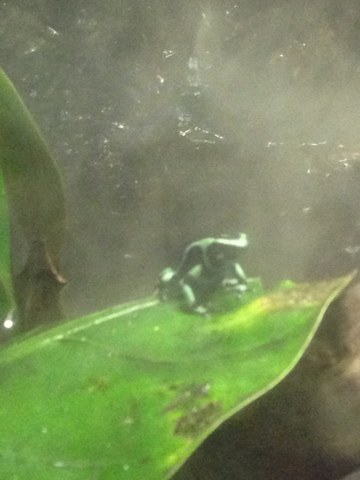Thursday, May 16, 2013
Algae Lab
On Monday me and Courtney Clubb did the algae lab. It was pretty gross and smelled really bad but it was all for science! Anyways, we found many interesting algae organisms. We found a scud which looks like a white shrimp. A Midge larva which is just nasty. Then a water mite, the water was full with them! Then a seed and clam shrimp which looks like a water mite but smaller. A Predaceos Diving Beetle Larva and this kinda looked like an alien. Then we found a Damsel Fly Larva, which also looked like an alien and these things are super fast!! Then for the last organism we found a Paramecium, which is also super fast and really hard to study for too long and even take a picture of. To be honest, I didn't find much that was disgusting, just because I really do love science and studying things. Overall this was a fun lab! OH! and the algae we found was mainly Stigeoclonium, Oscillatoria, and Closterium! Mrs. Ellis checked me and Courtney Clubb's list off and that's when we turned it in. It was really interesting to see up close just what exactly is in the water!
Thursday, May 2, 2013
Aquarium Field Trip
Five interesting and educational thing i learned on the field trip was
1) how to time manage
2) the oronocco crocodile is enormous. Like OMG.
3) the giant river otter is actually GIANT
4) parrot fish like to come to the glass of the tank and look at you
5) I can name every salt water fish in that place thanks to this class. #MarineBiologistStatus
My favorite part of the trip was the shark part and spaghetti warehouse! I really liked seeing all the animals!
1) how to time manage
2) the oronocco crocodile is enormous. Like OMG.
3) the giant river otter is actually GIANT
4) parrot fish like to come to the glass of the tank and look at you
5) I can name every salt water fish in that place thanks to this class. #MarineBiologistStatus
My favorite part of the trip was the shark part and spaghetti warehouse! I really liked seeing all the animals!
Amphibians
The difference between frogs and toads are that
Frogs-
Their skin is moist and smooth
They are a symbol of fertility
They can jump up to 36 times our size
Toads-
Their skin is dry and rough
They have poison glands behind each of their eyes
They walk instead of hop
Associated with witch craft
B: indicators of a healthy ecosystem
Toads and frogs are indicators of a healthy ecosystem because it means that there is a body of water some where
Close.
-whenever frogs are sick or disappearing it means there's something wrong with the ecosystem
-frogs alert scientist by the quality of their skin and health if there is pollution in the air or in the water
C: frog decrease
The frog and toad population is decreasing because of habitat loss and fragmentation, chemical pollution, increased ultraviolet radiation, acid precipitation, commercial harvest. Most of the problems can be directed towards human and the environment
Frogs-
Their skin is moist and smooth
They are a symbol of fertility
They can jump up to 36 times our size
Toads-
Their skin is dry and rough
They have poison glands behind each of their eyes
They walk instead of hop
Associated with witch craft
B: indicators of a healthy ecosystem
Toads and frogs are indicators of a healthy ecosystem because it means that there is a body of water some where
Close.
-whenever frogs are sick or disappearing it means there's something wrong with the ecosystem
-frogs alert scientist by the quality of their skin and health if there is pollution in the air or in the water
C: frog decrease
The frog and toad population is decreasing because of habitat loss and fragmentation, chemical pollution, increased ultraviolet radiation, acid precipitation, commercial harvest. Most of the problems can be directed towards human and the environment
Steps to asses a pond
Here are the steps to asses a pond! They're very simple and very cheap. Such a wonderful combination!
1) observe your area, check how the water looks, if there's any foam or oils on the surface or any signs of an algae bloom
2) take a water Sample: look at insects and algae
3) Do a water quality test. Check ammonia, nitrate, pH, and conductivity
4) chemical pond: if you want to do this, it's expensive but it's pretty effective!
1) observe your area, check how the water looks, if there's any foam or oils on the surface or any signs of an algae bloom
2) take a water Sample: look at insects and algae
3) Do a water quality test. Check ammonia, nitrate, pH, and conductivity
4) chemical pond: if you want to do this, it's expensive but it's pretty effective!
Subscribe to:
Comments (Atom)











